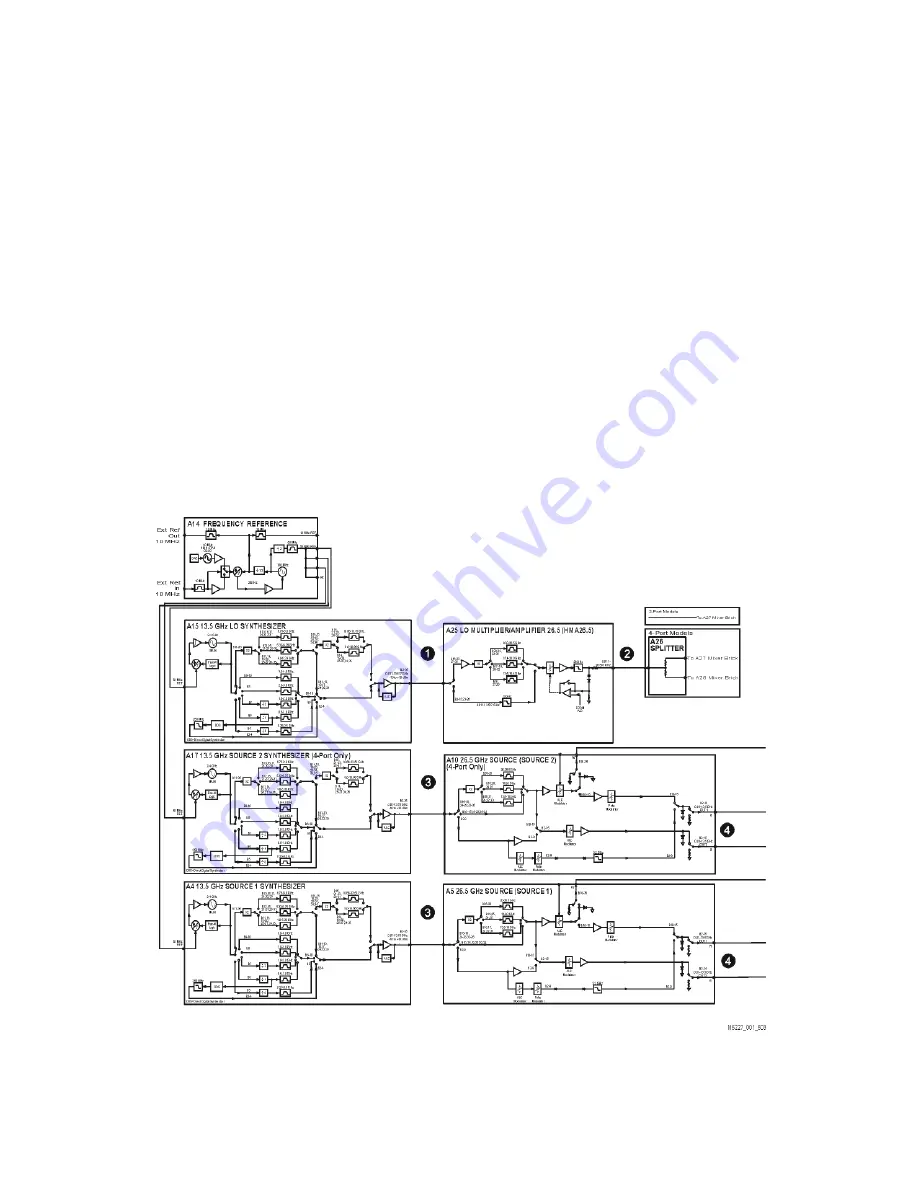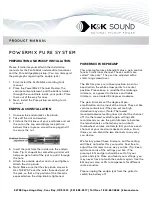
Keysight N5227B Service Guide 5-9
Theory of Operation
Synthesized Source Group Operation
The A4 13.5 GHz synthesizer board produces an incident signal that is sent
through the A5 26.5 GHz source board and then through the A7 and A8
doubler boards to the front panel outputs. Likewise, the A17 13.5 GHz
synthesizer board produces an incident signal that is sent through the A10 26.5
GHz source board and then through the A12 and A13 doubler boards to the
front panel outputs. Portions of these signals are coupled off and sent to the
A27 and A28 mixer bricks (A–D and R1–R4) where they are mixed with the LO
signal from the A26 splitter to produce the 7.438 MHz (or 0.826 MHz) IF signal.
The A4, A15, and A17 13.5 GHz synthesizer boards each contain their own
phase lock circuitry. The A15 board produces an independently phase locked
LO signal while the A4 and A17 boards produce independently phase locked
test signals. This makes it possible for the LO signal to be tuned to a different
frequency than the test signal. With frequency offset mode disabled, the LO
signal is 7.438 MHz higher than the test signal. Since the A4, A15, and A17
13.5 GHz synthesizer boards each receive their 50 MHz input reference signal
from the exact same source, frequency drift error is eliminated.
Figure 5-6
Source Group, Part 1
















































